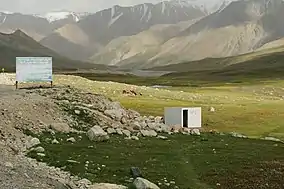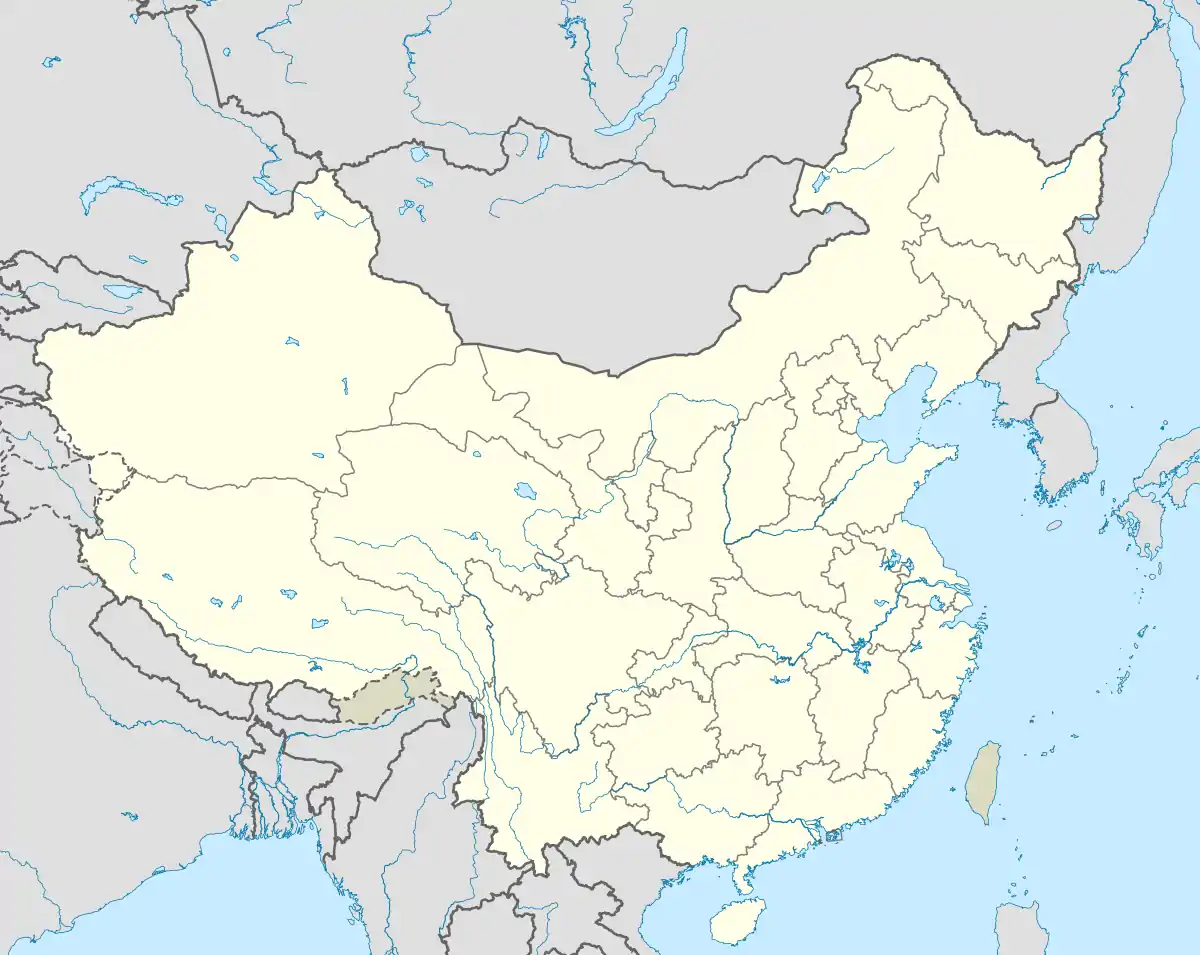Taxkorgan Nature Reserve
The Taxkorgan Nature Reserve (officially spelled Taxkorgan Natural Reserve) is a nature reserve in Kashgar Prefecture, Xinjiang, China. It is situated around the Taghdumbash Pamir of Pamir Mountains and Karakorum Mountains. It covers about 14,000 square kilometres (5,400 sq mi) was established in 1984[1] mainly to protect the rare Marco Polo sheep and Tibetan argali. It has since also served to protect other species such as the snow leopard.[2]
| Taxkorgan Nature Reserve | |
|---|---|
| Taxkorgan Natural Reserve | |
IUCN category IV (habitat/species management area) | |
 | |
 Location within China | |
| Location | Xinjiang, China |
| Nearest city | Taxkorgan |
| Coordinates | 37°N 75.5°E |
| Area | 14,000 km2 (5,400 sq mi) |
| Established | 1984 |
| Governing body | Kashgar Prefecture and State Forestry Administration of China |
| Taxkorgan Nature Reserve | |||||||
|---|---|---|---|---|---|---|---|
| Traditional Chinese | 塔什庫爾幹野生動物自然保護區 | ||||||
| Simplified Chinese | 塔什库尔干野生动物自然保护区 | ||||||
| Literal meaning | Tashkurgan Wildlife Nature Reserve | ||||||
| |||||||
Landscape and vegetation
The reserve is situated in westernmost China in the border area to Afghanistan, Tajikistan and Pakistan. It is also bordered by Khunjerab National Park in Pakistan and Wakhan National Park in Afghanistan. Half of its size is above 4,500 m and encompasses the northern edge of the Karakorum, the western edge of the Kunlin and the eastern offshoots of the Paimr mountains. To the south the reserve is bordering Khunjerab National Park in Pakistan. Most of the landscape is dominated by open, alpine vegetation. Trees are only present in some valleys below 3,400 m.[3]
Fauna
The reserve is home to three wild ungulate species. The most prominent is the Marco Polo sheep. In the 1980s there were about 150 of these large wild sheep in the reserve.[3] Today, the population has increased to about 1,000 animals.[4] The other two ungulate species are the Siberian ibex and the blue sheep. Another ungulate, which was present originally in the area is the kiang. Large predators are represented by snow leopard, wolf and brown bear. About 7,750 people with 70,000 domestic animals inhabit the reserve. The livestock has a strong impact on the reserve's vegetation.[3]
During 2011-2013, the Tien Shan dholes (Cuon alpinus hesperius) have been spotted by the local people in the reserve.[5]
References
- "Taxkorgan Nature Reserve". icimod.org. International Centre for Integrated Mountain Development. Archived from the original on 2016-08-12. Retrieved 2017-02-05.
- Zahler, Peter; Schaller, George (1 February 2014). "Saving More Than Just Snow Leopards". New York Times. Retrieved 2017-02-10.
...creating a large protected area for snow leopards across China, Pakistan, Afghanistan and Tajikistan. China and Pakistan are working cooperatively to manage the adjoining Taxkorgan Natural Reserve in China and Khunjerab National Park in Pakistan.
- Schaller, George B.; Hong, Li; Talipu; Hua, Lu; Junrang, Ren; Mingjiang, Qiu; Haibin, Wang (1987). "Status of large mammals in the Taxkorgan Reserve, Xinjiang, China". Biological Conservation. 42: 53–71. doi:10.1016/0006-3207(87)90052-8.
- Schaller, George B.; Kang, Aili (2008). "Status of Marco Polo sheep Ovis ammon polii in China and adjacent countries: Conservation of a Vulnerable subspecies". Oryx. 42. doi:10.1017/S0030605308000811.
- Riordan, Philip; Wang, Jun; Shi, Kun; Fu, Hongyan; Dabuxilike, Zhu; Zhu, Kebiao; Wang, Xiaohu (2015). "New evidence of dhole Cuon alpinus populations in north-west China". Oryx. 49 (2): 203. doi:10.1017/S0030605315000046.
External links
- Summary of the Park in Chinese, State Forestry Administration
- Taxkorgan-Reservat UNEP-WCMC